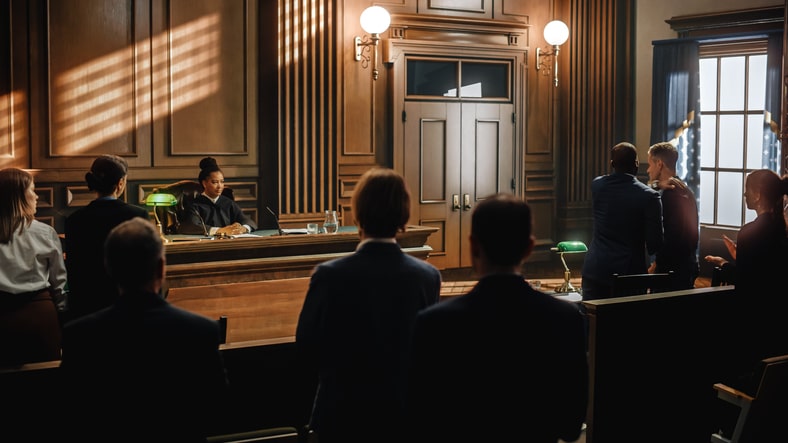Things move quickly in courtrooms, often demanding later scrutiny by the subjects and lawyers involved in the case. In most courtrooms today, a stenographer and/or a court reporter or clerk records all verbal exchanges. As in less formal meetings, a court reporter’s notes of what takes place in a courtroom are often referred to as “minutes,” taken from the Latin term “minuta scriptura,” or small notes. If you’ve been in a California courtroom and heard a ruling referred to as a “minute order” you might be wondering what this legal document is, and how to respond to it.

Understanding Minute Orders in the Courtroom
You might think that a judge only makes a ruling at the end of a hearing or criminal trial, but more often, many rulings take place throughout the proceedings as the judge responds to motions or requests from both parties. A minute order is a legal document with a written notice of a judge’s ruling on any motion brought forward by a party in a legal proceeding. For instance, one party in a custody hearing may ask for a piece of evidence to be admitted into the record. The judge will then make a ruling to allow or deny the evidence.
The written copy of the ruling taken by the court clerk is a minute order, also sometimes called a minute entry. These orders are typically very brief, containing a simple denial or approval of a motion brought forward in the courtroom. These minute orders become a part of the permanent record in a court case. Since the order is created right in the courtroom by the judge’s words, a judge does not need to sign a minute order. Unlike evidence from outside a courtroom, a minute ruling generated within a court proceeding doesn’t require a file stamp.
What to Expect From a Minute Order
A clerk’s minute order may be the only documented record of a judge’s verbal ruling in a hearing, trial, or another courtroom proceeding. Though the format of a minute order may vary depending on the jurisdiction, they typically include the following:
- The name of the court
- The date of the ruling
- The case number
- The name of the presiding officer
- The court clerk’s name
- The type of court proceeding
- The judge’s ruling
Most minute orders are only a single page, but some may be several pages if a judge made multiple rulings in a single court proceeding.
Obtaining a Copy of a Minute Order
Despite the brief wording and unsigned format of a minute order, they are every bit as binding as the judge’s formal ruling at the end of a hearing. Because the party who made the motion must abide by the ruling, there are times when an attorney and their client may need to carefully examine the details of the minute order so they will be in full compliance. Any party in a court proceeding is entitled to a copy of a minute order. Physical copies are typically available from the courtroom clerk at the courthouse within a day or two of the court proceeding. If you need one as soon as possible, you can make an online request for a copy.
Sometimes a judge will make multiple rulings during a court proceeding, all of which appear on the minute order. In some cases, the order might include relevant details and the supporting laws that led to the ruling.
Examining a Minute Order
A family law attorney may wish to quickly obtain a copy of a minute order to examine the details so they have time to request changes if the order is found to be inaccurately recorded. Though rare, an occasional mistake may appear on the written order, in which case, one party’s lawyer must immediately file a motion for a correction based on a referral to the audio file of the courtroom proceedings. If it’s found that the clerk made a mistake, a lawyer may make a motion for modification. Even small mistakes in wording can have significant ramifications since a minute order is as binding to all parties in a court proceeding as the judge’s final ruling.

